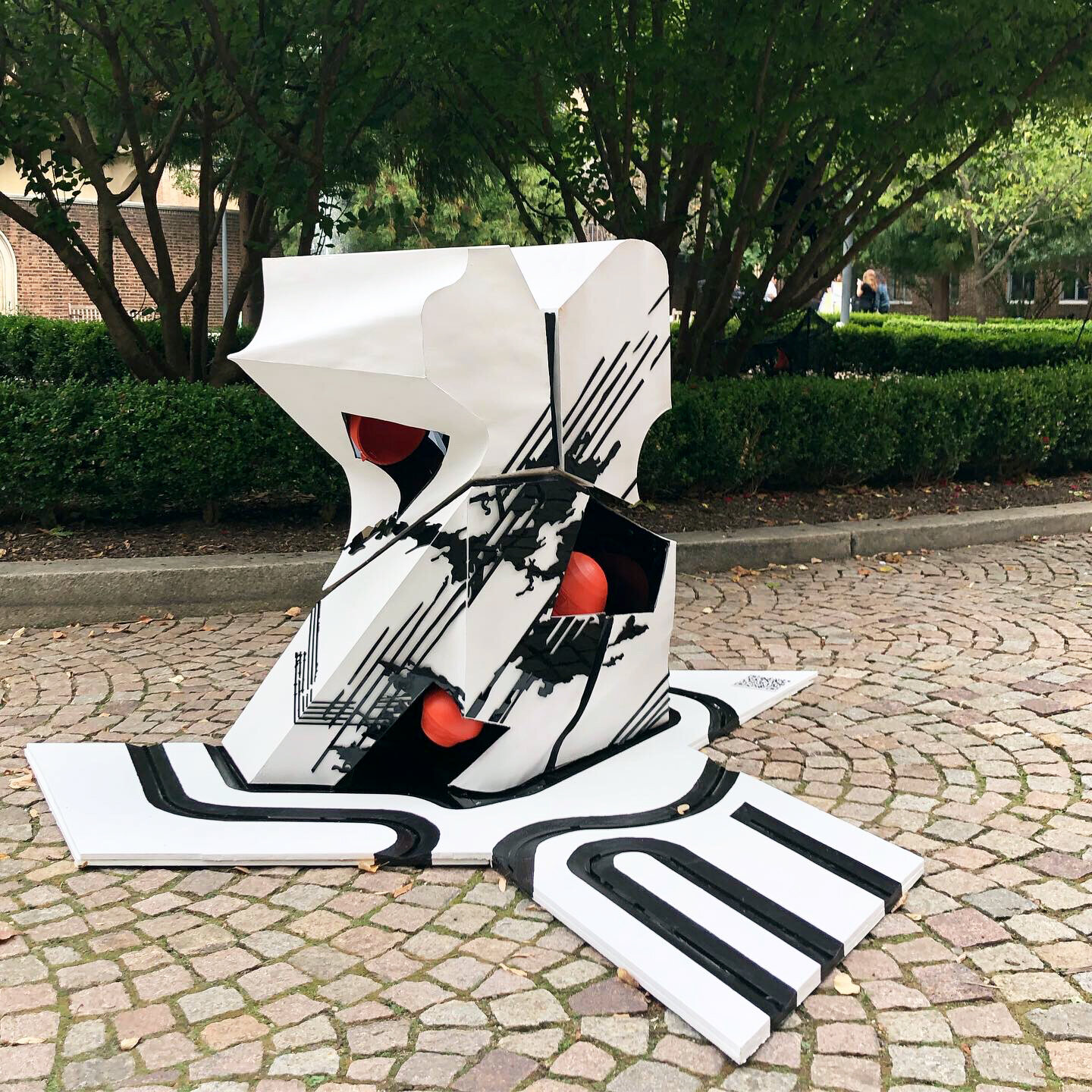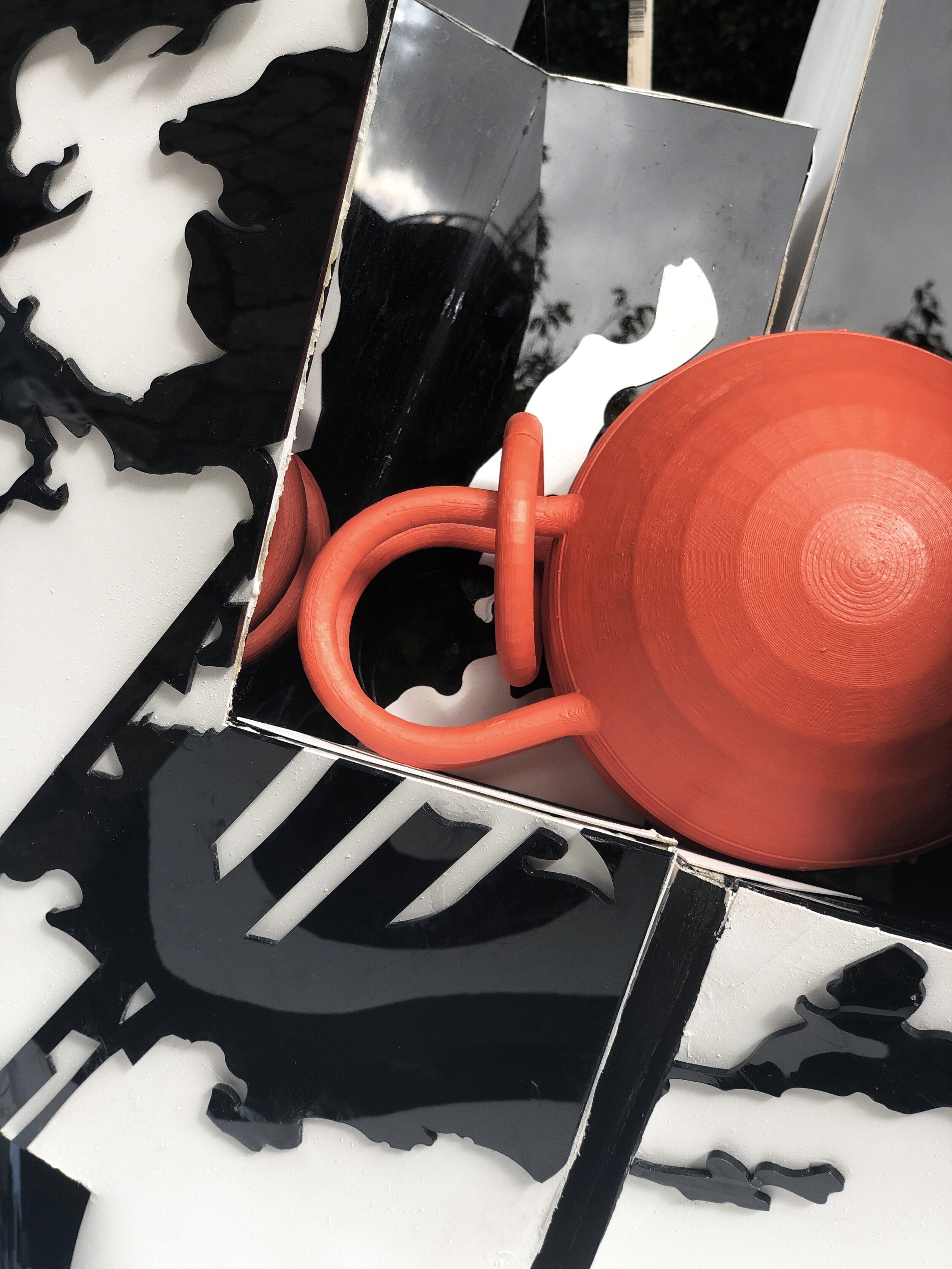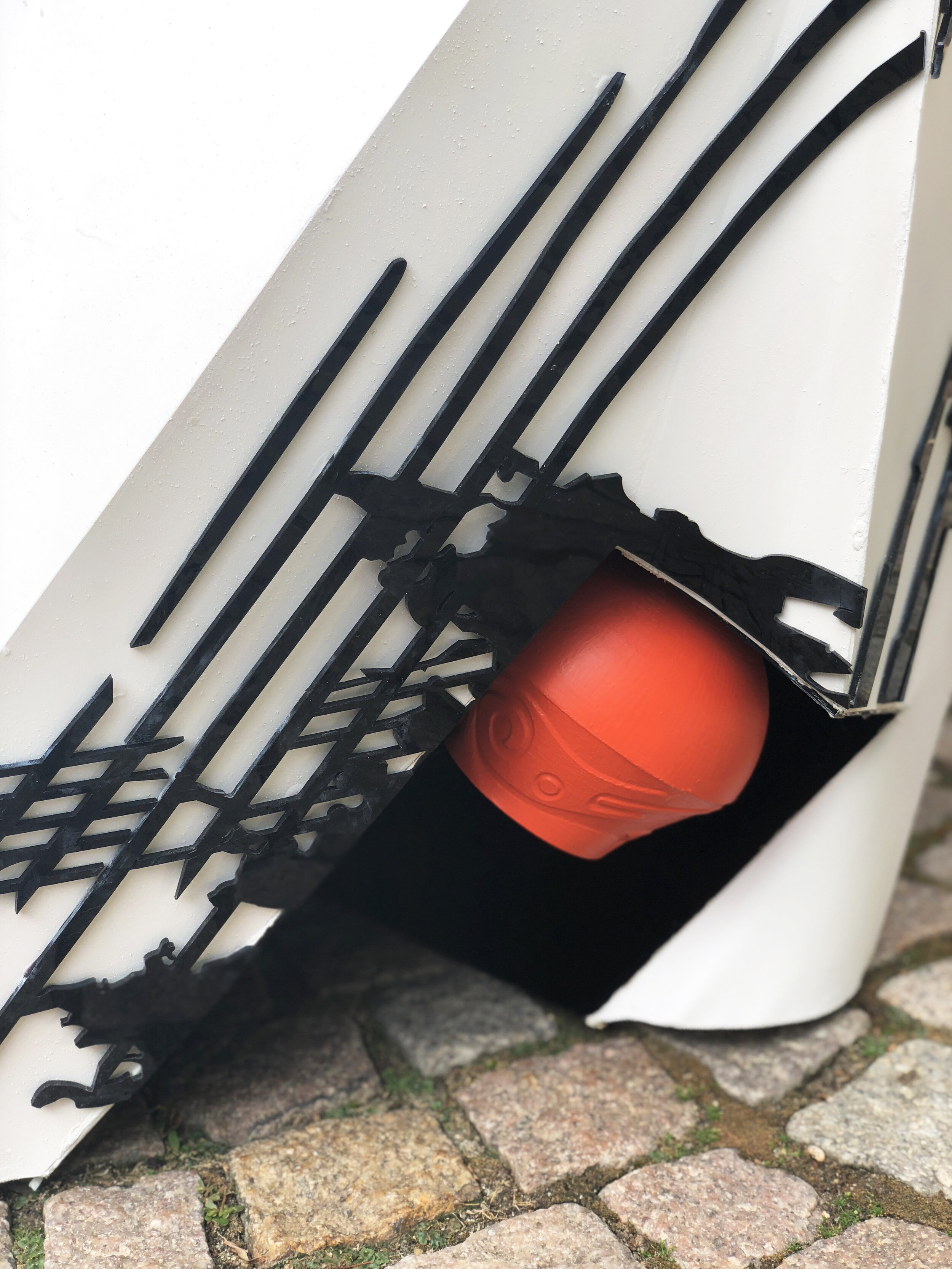Mining Remnants
CRITIC
Andrew Saunders
TEAM
Yulun Liu, Yoki Luo, Elisabeth Machielse, Miguel Matos
Understanding drastically different moments of history is never an easy task, but it is made even more complex when considering the non-linear nature of time, as described by the art historian George Kubler, author of The Shape of Time. Instead of looking at the history of these four artifacts in relation to a timeline, Mining Remnants looks at each object outside of their original context and interweaves them into a new narrative using both visual and textural methods. The cabinet demonstrates the ability of historical objects to reach across the boundaries of time and reframe each other – by situating each artifact into a separate void [representing their different moments in time] and then allowing their extracted qualities to visually connect them through the patina, the artifacts are then able to produce and receive a set of what Kubler calls “signals” from each other in an attempt to break the linearity of their own time.
This notion of connecting timelines is continued through the presence of the Strong Figure. The shape of the cabinet itself is derived from a set of curves taken from each of the artifacts which are then rebuilt through Euclidean shapes, thereby allowing the various set to come together in the same language. Using Euclidean shapes also allows the form to become a developable surface, one that can be unrolled and rerolled into the original figure, and limits the shape to a simple language of lines and arcs that can be layered into organized complexity.
Mining Remnants also speaks to the boundaries between historical objects and time periods – the overall figure is broken down into four smaller figures that are connected through a black seam that runs across the surface. However, the seam sometimes interrupts the patina that connects each artifact’s voids and separates the voids themselves. This goes to show that while all of these artifacts are connected through time and through the cabinet, the shape of time is complicated and constantly changing. By this, we mean that one single object cannot be fully understood unless the viewer acknowledges the historical impact it had on or received from other cultural objects, the present-day impact in relation to current cultural understandings, and how this might shape the understanding of other objects as more are researched in the future. This last part is particularly important – although the presented project reframes the artifacts into the same narrative, this is not the final interpretation of their meanings. Future understandings of world events and history will once again provide opportunities to reframe and reinterpret them within new frameworks and giving them renewed meaning, just as it intended as history continues to develop.
















